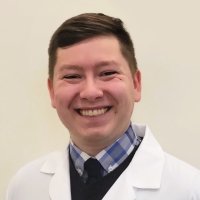Incorporating Innovation and Creativity in Medical Curriculum

“We made sure that in the first and second years, there was at least one case-based, hands-on ultrasound experience with standardized patients, where each student had the opportunity to use the probe and ultrasound. It was also threaded throughout the body system courses with demonstrations or optional hands-on experiences."
Jeremy Grachan, PhD, is an assistant professor of anatomy and the anatomy competency lead for the medical curriculum at Rutgers New Jersey Medical School. While pursuing his doctorate at the Ohio State University, he developed a passion for medical education and focused his research and dissertation on anatomy education. Throughout his career, Grachan has sought new ways to encourage self-determination and motivation in students by making the learning process more accessible and enjoyable. This ultimately led him to the Training to Teach in Medicine program at Harvard Medical School, where he developed a stronger foundation in andragogical approaches to medical education, especially those related to active learning and teaching at the bedside.
Motivating Learners in Medical Education
Grachan first heard about Training to Teach in Medicine from Rutgers faculty who had previously taken the program. His goal upon enrolling was to learn the innovative styles being used in medical curriculums across the globe.
“I found it interesting that the program online was meant to be broad in terms of the population that it could serve and benefit,” he says. “That helped me to understand the different levels of study that a medical student and a resident have to go through. Then I could think about how to incorporate that into a preclinical curriculum.”
Integrating a Preclinical Curriculum at Work
Grachan’s capstone project with Training to Teach in Medicine was centered on formally integrating an ultrasound curriculum for the preclinical years of undergraduate medical education. Once the program ended, he began working with the Rutgers Office of Education to determine how and where the curriculum could be incorporated into his work.
“We made sure that in the first and second years, there was at least one case-based, hands-on ultrasound experience with standardized patients, where each student had the opportunity to use the probe and ultrasound. It was also threaded throughout the body system courses with demonstrations or optional hands-on experiences."
New Ways of Guiding and Mentoring Students
The impact of the program continues to shape his work. Grachan collaborated with colleagues to develop a “head and neck escape room” as part of the medical and dental curriculum. Originally a Training to Teach in Medicine capstone project for his colleague, George Holan, DPT, it was released earlier this year and published in MedEdPORTAL . He continues to explore creative ways to bring escape rooms and game-based learning into the medical curriculum.
In his current position, Grachan is the co-faculty sponsor for Rutgers New Jersey Medical School’s Distinction Programs, where accepted medical students complete a curricular project. He has applied the insights he gained during conversations with Training to Teach in Medicine course director Jeremy Richards, MD and workshop faculty Amy Sullivan, EdD to help inform how he guides and mentors his students.
Broadening Horizons for Future Teachers
Grachan advises anyone who is considering the Training to Teach in Medicine program to keep an open mind and take advantage of all the program has to offer.
“You may think that a session is not for everyone, but those sessions collectively can help better prepare you for the ever-changing world of academia. This program is meant to broaden your horizons of what medical education can look like and how you can better support your students.”
Written by: Delaney Benison
